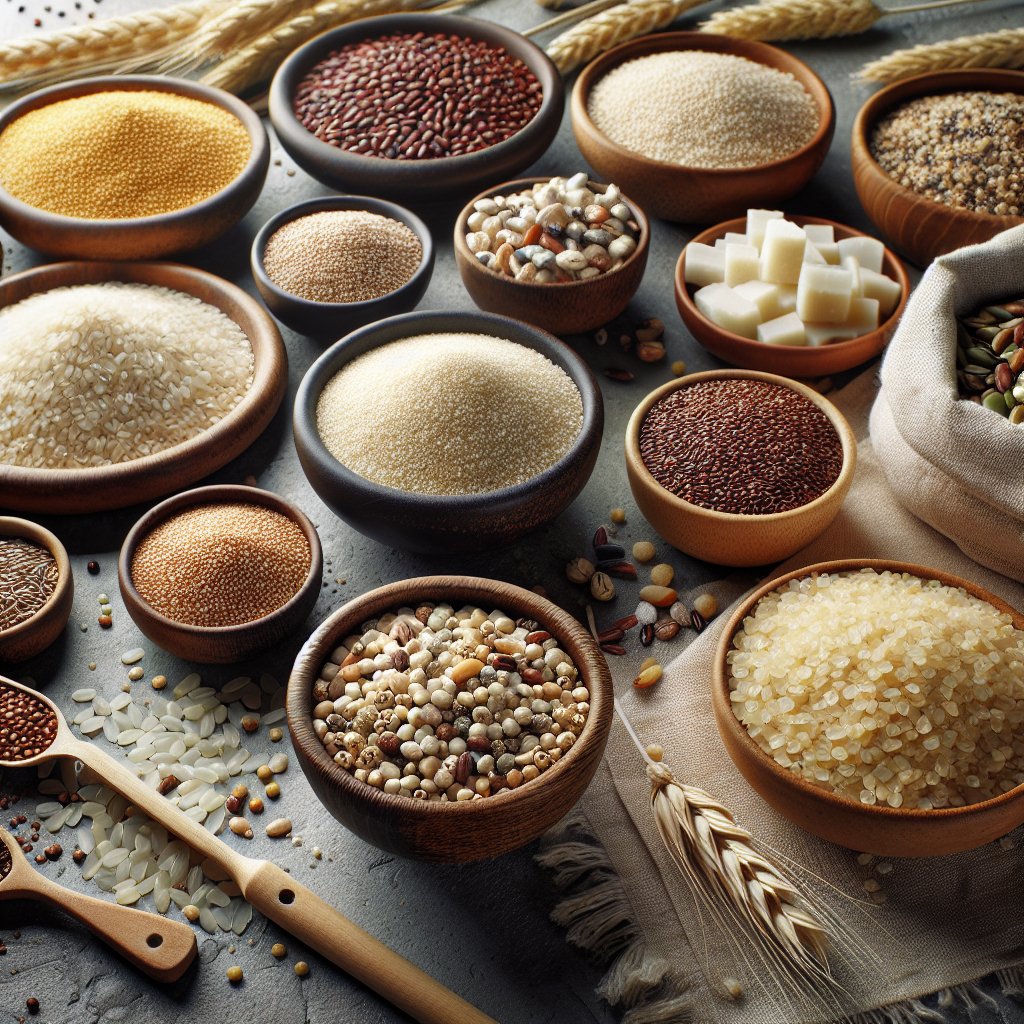The growing market for gluten-free grains reflects a significant shift in consumer preferences and dietary needs. As awareness of gluten-related disorders increases, so does the demand for alternative grains that cater to those who are gluten intolerant or choose to avoid gluten for other health reasons. This article explores the various gluten-free grains available, their nutritional benefits, and the market trends driving their popularity.
Understanding Gluten-Free Grains
Gluten is a protein found in wheat, barley, and rye, which can cause adverse reactions in individuals with celiac disease or gluten sensitivity. As a result, gluten-free grains have gained traction as viable alternatives for those seeking to maintain a healthy diet without gluten. The most popular gluten-free grains include quinoa, rice, millet, buckwheat, and amaranth, each offering unique flavors and nutritional profiles.
Quinoa: The Super Grain
Quinoa has emerged as one of the most popular gluten-free grains due to its impressive nutritional content. It is a complete protein, meaning it contains all nine essential amino acids, making it an excellent choice for vegetarians and vegans. Additionally, quinoa is rich in fiber, vitamins, and minerals, including magnesium, iron, and B vitamins. Its versatility allows it to be used in salads, soups, and as a side dish, further contributing to its popularity.
Rice: A Staple for Many
Rice is one of the most widely consumed gluten-free grains globally. Available in various forms, including white, brown, and wild rice, it serves as a staple food in many cultures. Brown rice, in particular, is favored for its higher fiber content and nutritional benefits compared to white rice. Rice can be used in a multitude of dishes, from stir-fries to desserts, making it a versatile option for gluten-free diets.
Millet: The Ancient Grain
Millet is an ancient grain that has been cultivated for thousands of years. It is naturally gluten-free and is known for its mild flavor and fluffy texture when cooked. Millet is rich in magnesium, phosphorus, and antioxidants, making it a nutritious addition to any diet. It can be used in porridge, salads, or as a side dish, and its adaptability makes it a favorite among health-conscious consumers.
Buckwheat: A Nutritional Powerhouse
Despite its name, buckwheat is not related to wheat and is entirely gluten-free. It is a rich source of antioxidants, fiber, and essential nutrients, including manganese and copper. Buckwheat can be consumed in various forms, such as groats, flour, or noodles (soba). Its nutty flavor and health benefits have made it increasingly popular among those seeking gluten-free options.
Amaranth: The Nutrient-Dense Grain
Amaranth is another gluten-free grain that has gained attention for its high protein content and rich nutrient profile. It is particularly high in lysine, an amino acid that is often lacking in other grains. Amaranth is also a good source of fiber, iron, and magnesium. It can be cooked as a grain, used in baking, or added to smoothies for an extra nutritional boost.
Market Trends and Consumer Preferences
The gluten-free grain market has experienced significant growth in recent years, driven by several factors. Increased awareness of gluten-related disorders, the rise of health-conscious consumers, and the popularity of plant-based diets have all contributed to the demand for gluten-free options. According to market research, the global gluten-free market is projected to continue expanding, with grains playing a crucial role in this growth.
Health and Wellness Trends
As consumers become more health-conscious, they are increasingly seeking out foods that promote overall well-being. Gluten-free grains are often perceived as healthier alternatives to traditional grains, leading to their rising popularity. Many consumers associate gluten-free diets with weight loss, improved digestion, and increased energy levels, further driving the demand for gluten-free grains.
Innovation in Food Products
Food manufacturers are responding to the growing demand for gluten-free grains by developing innovative products that incorporate these grains into various food items. From gluten-free bread and pasta to snacks and breakfast cereals, the market is flooded with options that cater to gluten-free consumers. This innovation not only provides more choices for consumers but also helps to normalize gluten-free diets in mainstream food culture.
Environmental Considerations
Another trend influencing the gluten-free grain market is the growing awareness of environmental sustainability. Many gluten-free grains, such as quinoa and millet, are considered more sustainable than traditional grains due to their lower water and resource requirements. As consumers become more environmentally conscious, they are more likely to choose gluten-free grains that align with their values.
Challenges in the Gluten-Free Grain Market
Despite the positive trends, the gluten-free grain market faces several challenges. One significant issue is cross-contamination during processing, which can pose a risk for individuals with celiac disease. Ensuring that gluten-free grains are processed in dedicated facilities is crucial for maintaining their safety. Additionally, the higher cost of gluten-free grains compared to traditional grains can be a barrier for some consumers, limiting their accessibility.
The Future of Gluten-Free Grains
The future of gluten-free grains looks promising as consumer demand continues to rise. With ongoing research into the health benefits of gluten-free diets and the development of new products, the market is likely to expand further. Additionally, as more people adopt gluten-free lifestyles, the availability of gluten-free grains in mainstream grocery stores will likely increase, making them more accessible to a broader audience.
Education and Awareness
Education plays a vital role in the growth of the gluten-free grain market. As consumers become more informed about gluten-related disorders and the benefits of gluten-free grains, they are more likely to incorporate these grains into their diets. Food manufacturers and health organizations can help by providing resources and information about gluten-free options, promoting a better understanding of the importance of gluten-free grains.
Conclusion
The growing market for gluten-free grains is a reflection of changing consumer preferences and dietary needs. With a variety of nutritious options available, gluten-free grains are becoming increasingly popular among health-conscious individuals. As the market continues to evolve, it is essential for consumers to stay informed about the benefits and challenges associated with gluten-free grains, ensuring they make choices that align with their health goals and lifestyle.













